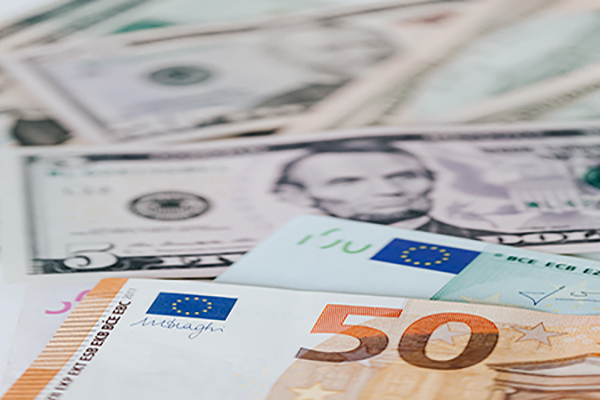 |
||||||||||||
|
||||||||||||
| House Panel Moves Towards Opt-In Privacy Bill |
 |
| The "American Data Privacy and Protection Act" was recently reintroduced. The bill's current version differs from an early draft written a month ago. This draft proposes new restrictions on companies gathering and using online consumer data. However, the measure still mandates companies get user opt-in consent before collecting, processing, or transferring aggregated online search or browsing history. A separate provision allows consumers to opt out of targeted ads, even if they previously opted into them. The bill would also prevent targeted ads from being served to minors under 17. Any digital giant bringing in over $250 million in annual revenue will have its algorithms monitored for potential bias. If passed, the legislation would nullify certain state privacy laws like California, and Illinois. |
| We spoke with Jessica B. Lee, Partner, Chair, Privacy, Security, Data & Innovations at Loeb & Loeb, and she provided her two cents on the matter. "There will obviously be an impact on the flow of data through the ecosystem, but I don't think that impact is as significant as it would have been a few years ago," Lee explained. "Between Apple's ATT and the preparation for the sunset of third party cookies, I think companies are at least starting to prepare for certain information to require consent or to be unavailable. The ecosystem is already preparing for significant structural changes, including restrictions on the ability to use browsing behavior across websites and over time to target ads. I am concerned that the focus on consent will push us into an EU-like internet experience where consumers are bombarded by pop-ups and banners requesting consent. I hope that the legislation allows for – and that companies instead will turn to – the use of privacy-enhancing technologies that will protect individual browsing behavior while giving advertisers and marketers enough information to reach their audiences. Targeted advertising is still opt-out, so with some innovation, there is still a path forward for the advertising ecosystem." |
| Upfront Ad Spend Geared Towards Streaming Services |
 |
| Traditional TV networks are usually the big talk of US upfronts, but streaming services are the key beneficiaries this year. According to a survey by iSpot in April, nearly four-fifths of respondents plan to devote upfront dollars to Hulu, while about half plan to spend with Peacock, Roku, and YouTube TV. According to a report by eMarketer, here are some interesting numerical findings surrounding streaming services:
|
| Of course, advertisers are allocating more ad spend towards CTV, as people continue to cut the cord and tune out of linear altogether. OTT devices and CTV started taking over the game long ago, but when the Pandemic hit, CTV numbers spiked. Not that CTV isn't without its issues — fragmentation, measurement, viewability, you name it. That's probably why GroupM is linking up with iSpot to address the viewability problem. A recent study by Group M and iSpot.tv revealed that 8% to 10% of streaming video ads appear after people turn off their devices, and a whole 17% of ads shown on TVs connected to a streaming device like a dongle, stick, or a gaming console are showing when the TV is off. This is no beuno. iSpot is working on a new tool called iSpot Verification, which can verify commercials appearing in streaming videos. And they're just one of many ad tech pros doing all they can to wrangle the wild, wild west of CTV advertising. Traditional TV will never be what it was but CTV advertising will have to keep evolving to bring advertisers the kind of KPIs they are looking to achieve. |
| Study Shows European Ad Fraud Decreased By 20% |
 |
| TAG recently released its fourth annual TAG European Fraud Benchmark study. The study highlighted a fantastic 20% year-over-year ad fraud decrease in TAG-certified channels in major European markets. What is a TAG certified channel? Any channel involving multiple entities in each ad transaction, like a media agency, buy-side/sell-side platform, or publisher. The channel would have to achieve the TAG Certified Against Fraud Seal. "One of the most interesting findings from this year's study came from interviews with industry leaders highlighting the changing expectations for fraud that have resulted from TAG's programs," said Rob Rasko, CEO of The 614 Group. "In 2019, the industry average for IVT across all channels was a whopping 8.99%, and advertiser expectations for fraud were dramatically higher. As TAG Certified Channels have proven their ability to hold IVT under 1%, that level has become the new industry standard for effective fraud prevention, and rates even a percent or two higher have become unacceptable to buyers. Thanks to TAG's programs, the industry has adapted its expectations to match the lower rates it can now confidently find through TAG Certified Channels." |
| Juniper Research found that out of $68 billion expected ad spend lost to ad fraud this year, $23 billion is expected to be lost to fraud in the US. And in 2019, TrafficGuard found that advertisers would lose $100 million a day due to ad fraud. That's nuts. Maybe it's time the U.S took a page out of the EU's playbook. It's definitely time for pubs to stop thinking that a certain amount of fraud is unavoidable. Preserving the status quo is never the path forward. |
| Around the Water Cooler |

Image sourced from
|
Some other topics we're tuned into...
|
 |
||||||||
|
||||||||
 |
||||||||
|
||||||||
 |
||||||||
|






